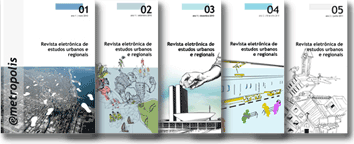-
Tweets
Movimentos populacionais metropolitanos e algumas relações socioespaciais
Por Érica Tavares da Silva
RESUMO
Este trabalho explora algumas lógicas para os movimentos populacionais no espaço urbano, que são considerados tanto através das migrações envolvendo a metrópole, como através dos deslocamentos pendulares. Essas possíveis relações abarcam diversos mecanismos socioespaciais que determinam a localização das pessoas no espaço, entre eles podem ser citados o acesso à moradia, ao mercado de trabalho, às oportunidades educacionais, ao sistema de mobilidade urbana, entre outros. Algumas hipóteses são analisadas, especialmente no que se refere ao lugar de residência e às características dos movimentos populacionais, a partir de uma aproximação da organização social do território, considerando mais detidamente a Região Metropolitana do Rio de Janeiro. Os resultados mostram que há uma relação entre as migrações intrametropolitanas e os movimentos pendulares. Quanto às migrações, além de serem os municípios da periferia que mais recebem pessoas no núcleo, também aumentam as trocas migratórias na própria periferia, ainda nesta, são as áreas populares que mais dinamizam os movimentos populacionais. Quanto à distribuição da população que faz movimento pendular, também são das áreas populares que saem mais pessoas para trabalhar ou estudar no núcleo da metrópole, apesar de, em termos proporcionais à própria população das áreas, haver mais participação nas áreas superiores.
Palavras-chave: Metrópoles; migração; movimento pendular.
ABSTRACT
This paper explores some logic to population movements in the urban space, which are considered by the migration and the commuting involving the metropolis. These relationships include many socio-spatial mechanisms that determine the location of people in space, such as the access to housing, the labor market, educational opportunities, and urban mobility system, among others. Some hypotheses are considered especially those related to place of residence and the characteristics of population movements, according to an approximation of the social organization of the territory, considering the Metropolitan Region of Rio de Janeiro. The results show that perhaps there should be a relationship between intra-metropolitan migration and commuting. With reference to migration, in addition to being the cities of the periphery that receive most people from the nucleus, also increase the migratory movements in the periphery, where the popular areas are covering population movements. As for the distribution of the population that realize commuting, are also the popular areas where more people go to work or study in the nucleus of the metropolis, although in proportional terms to their own areas of population, there is greater participation in higher areas.
Keywords: Metropolis; migration; commuting.



